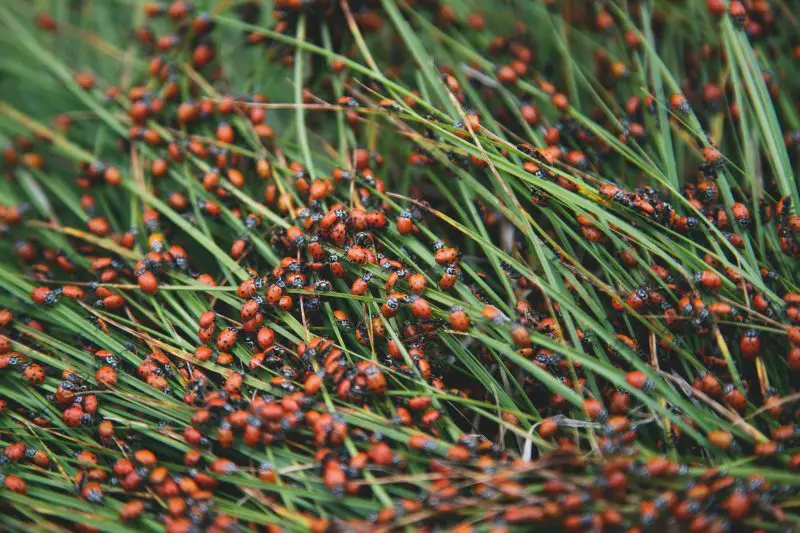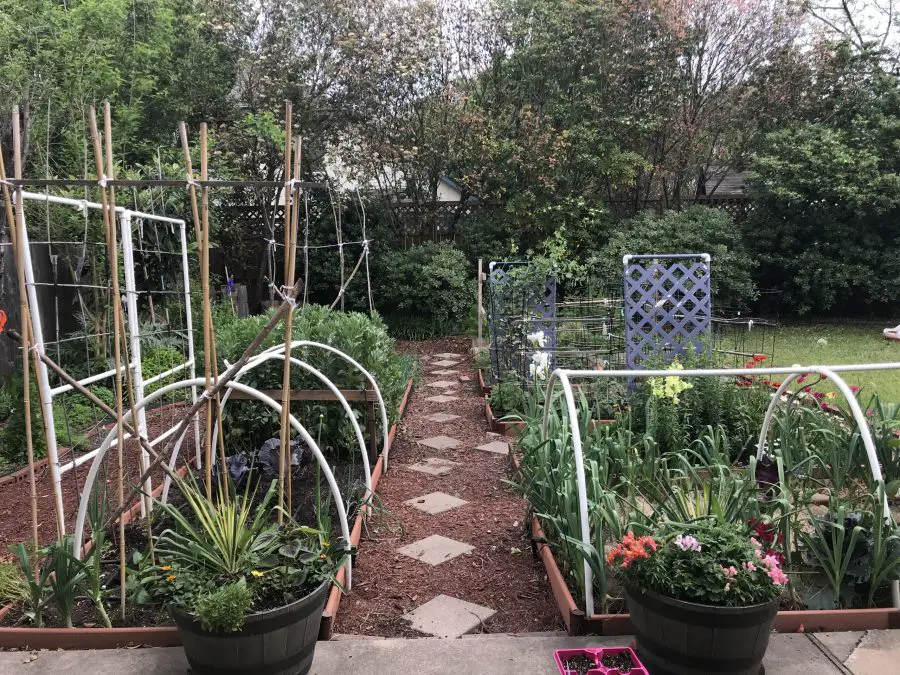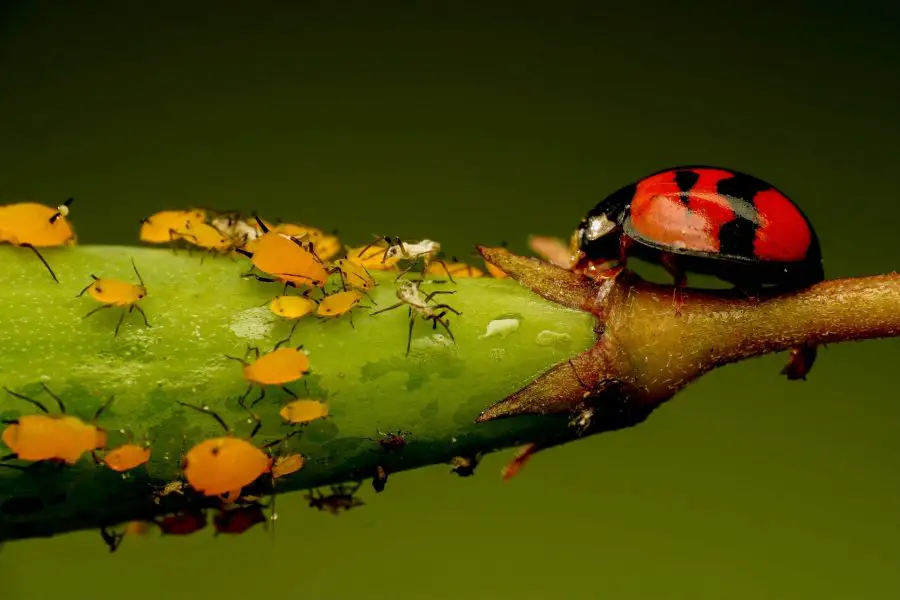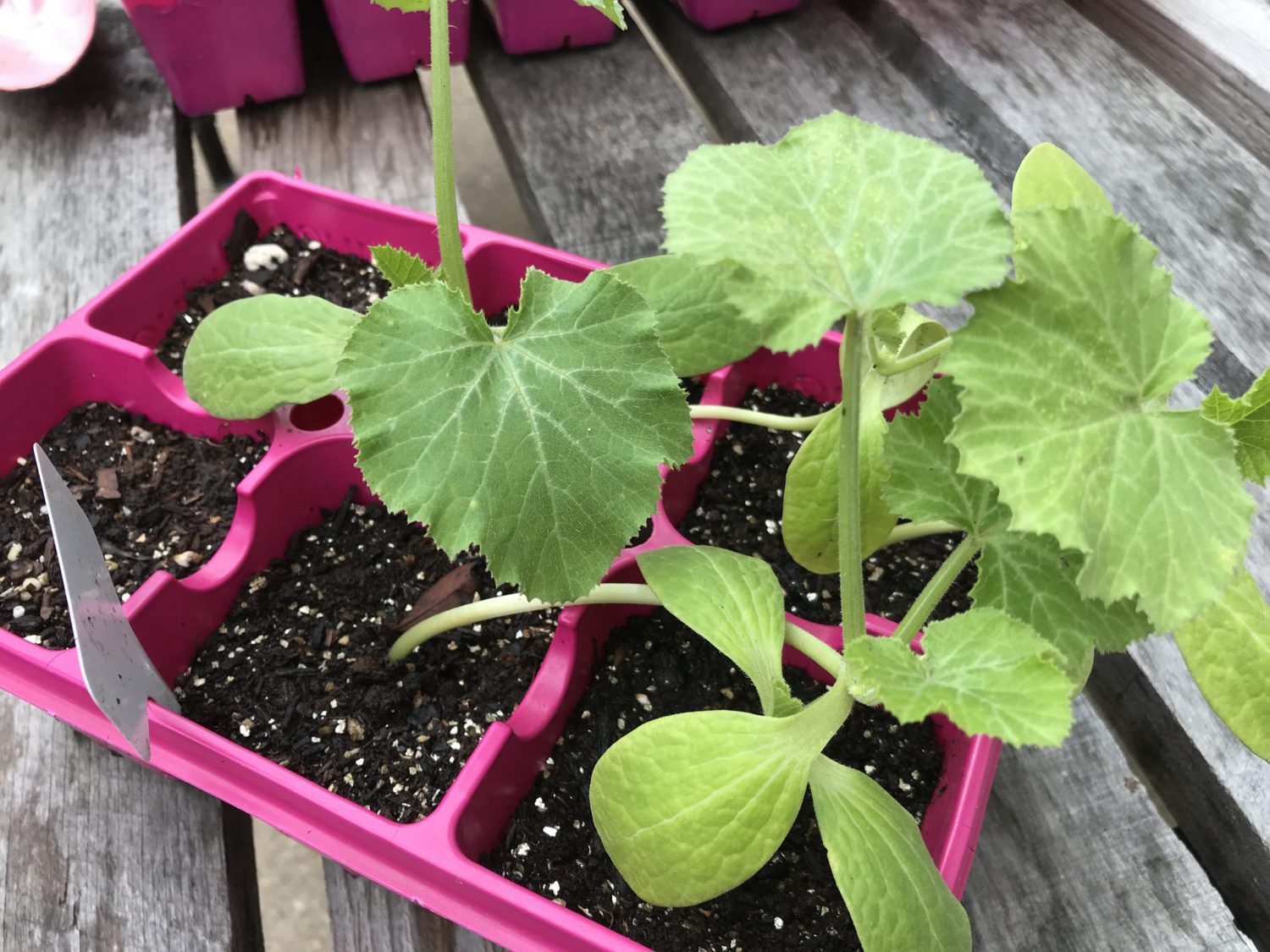The summer garden is lusher and more crowded than the winter garden since crops have abundant foliage and colorful flowers and fruits. Unfortunately, with this abundance comes the dreaded challenge of pest infestations. In this post, we will focus on managing the most common pests.
The warm temperatures, along with the thick greenery, make it comfortable for different bugs to thrive. Unfortunately, some of these pests can be pretty destructive. This article may not cover every existing bug in the home garden, but the list includes the most common ones.

What is a pest?
The word pest refers to any bug that causes damage and affects plants’ health. Therefore, paying attention to your garden and observing any changes that may occur is essential. Pest damage differs from one bug to another depending on its feeding methods.
Chewing damage
Insects with chewing mouthparts can manifest damage in three different ways:
- Visible physical damage manifests in the form of holes or total defoliation, which is caused mainly by beetles and caterpillars.
- Internal damage is not detectable at the beginning of the attack since it is caused by borers and miners, which feed on the inner walls of the stem. The plant will look healthy at first, then suddenly collapses.
- Subterranean damage is caused by chewing on the root system. Many beetle larvae may be the reason.
Piercing and sucking damage
Some bugs, such as aphids, have piercing mouth parts that tap into the plant’s vascular system. They then suck in the sap depositing a sticky substance on the plant, causing it to wilt and die. Other piercing bugs, such as spider mites, feed on the food-producing plant cells causing them to be yellow and dry out.
Egg-laying damage
Some pests like the cicadas cause damage by laying their eggs on the plant or girdling part of it to make a place for their babies.
Galls
Galls are abnormal growth on the plant caused by a hormone-like chemical emitted by certain insects. This growth is usually not harmful but makes gardeners nervous.
Stunting
Insects that feed on the new growth, like thrip and aphids, may stunt the plant’s development.
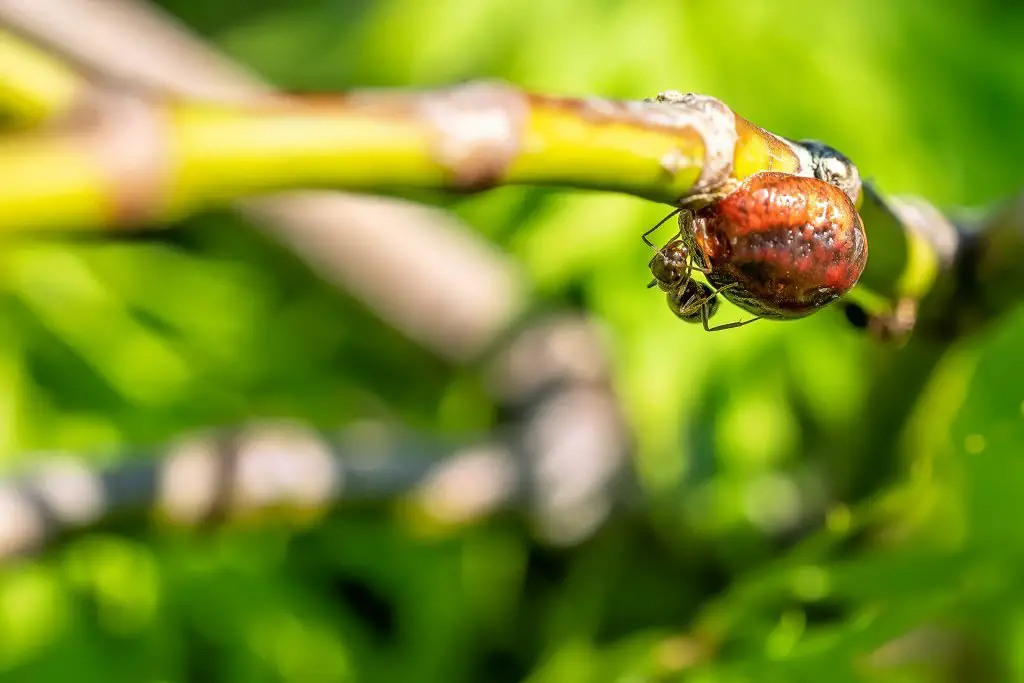
Organic pest control and management
The organic gardening approach to dealing with pests starts with good management by prioritizing control with minimum harm to humans and non-pest creatures. The following steps will show how to achieve effective results.
- Prevent any damage by providing the proper growing environment. Start by planting healthy plants in well-balanced soil. Use proper spacing and avoid overcrowding your growing beds. Always use clean tools to stop the spread of any problem.
- Monitor your garden regularly to detect any problems as soon as possible. Observe any changes in your plants from color, growth rate, and abnormal secretions.
- Identify the damage to find its cause.
- Decide on the action plan by determining the amount of damage if it is severe enough to take action.
- Treat your plants as soon as you notice the problem to stop the spread and to be able to use mild organic solutions since harsh chemicals should be the last resort.
Common garden pests
#1 Aphids
Aphids are the number one garden pest found in the garden every growing season. They are small sap-sucking insects of green, white, red, or black color. They live on the tip of the new growth and under the leaves. If not treated soon enough, they infest the plants and eventually take over the whole garden.

Detection
During the warm season, peppers, eggplants, green beans, and cucumbers are the main crops aphids enjoy. You can also find them on tomatoes and zucchini. Inspect your plants daily. Look under the leaves and at the new growth.
How to treat aphids?
- At the first sign, wash the plant with a strong jet of water every other day to break the aphids’ reproductive cycle.
- In case of a moderate infestation, use neem oil, natural soap, and water solution as a foliar spray. This combination dries the insects out, eventually killing them. Apply the solution every other day in the evening to prevent sunburn.
- Introduce predator bugs such as ladybugs. At their nymph stage, they devour the aphids.
- If the infestation is terrible even after treatment, it is time to get rid of the sick plant. After that, there is nothing more to do but save the rest of your garden.
How to make neem oil solution for treatment?
- 1/2 gallon water
- 1/2 tablespoon cold-pressed neem oil
- One drop of castile soap
Mix everything in a spray bottle and shake before each use. Soap will act as an emulsifier allowing the oil to stick to the leaf surface. Always test a small area to ensure the solution’s concentration is not too harsh on the plant.
#2 Spider mites
Spider mites are pencil-tip size spiders red in color. They thrive in warm and humid climates. They feed on the leaf sap causing it to turn yellow, then dry out.
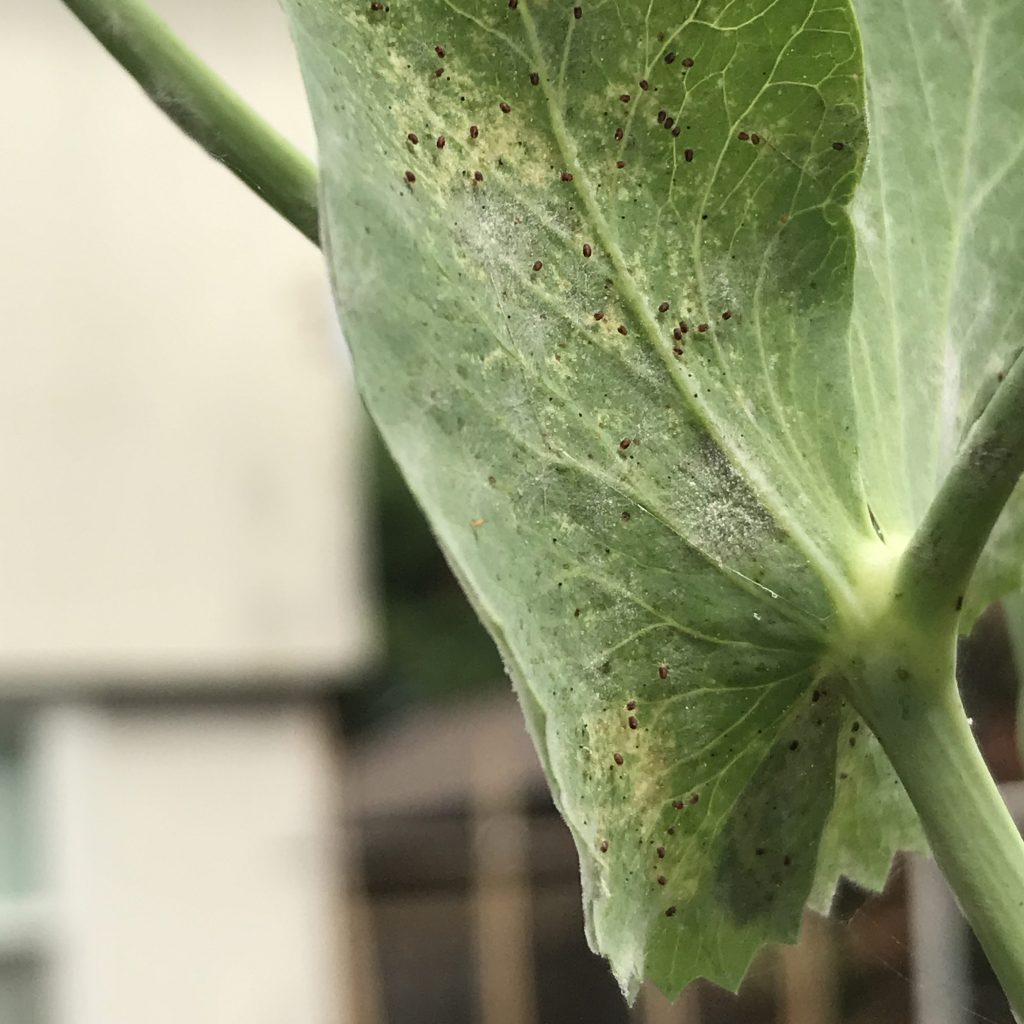
Detection
- Inspect the leaves for any yellow spots.
- Place a white piece of paper under the suspected leaf and tap on it.
- You should notice red dots crawling on the paper surface.
- Look for any webbing on the tips of the plant.
How to treat spider mites?
Spider mite infestation can happen in a blink of an eye. Therefore, it is vital to treat them as soon you notice them.
- Try to wash the foliage with a strong jet of water every other day until you get rid of them.
- Spray a neem oil-based solution every other evening. These solutions are available at any garden center, but you can make your own by mixing one pint of water, one teaspoon of neem, and a drop of liquid soap. Fill a spray bottle and shake well before use.
- Always spot test on a small part of the plant to prevent any burn damage.
- Apply the solution in the evening to prevent sunscald.
#3 Stink bugs
“Stink bug” is the name of many bugs that emit an unpleasant odor. There are more than 200 species of this family. The following are a few that you may encounter in your central Texas garden.
- Leaf-footed bugs are armor-like flying with a leaf shape on their back legs. At the Nymph stage, they look like red elongated spiders found in groups on the new growth or the fruit.
- Harlequin bugs are rounded armor-shaped insects with red and black spotty backs. Their nymphs are small ball-like shaped with a shiny orange, and black spotted back. Their favorite hosts are the crucifers, but they can also attack the nightshades.
- Squash bugs: They are greyish elongated armor-like bugs. They can infest a bed very fast if not treated early. They feed on squash and may destroy young plants in no time.
To control these pests, it is crucial to detect them early. The most effective remedy is either to spray them with soapy water or trap them in a jar filled with soapy water.



How to treat leaf-footed bugs?
The best way to control leaf-footed bug infestation is by catching them.
- Dedicate a jar with a lid for catching them.
- Fill the jar with soapy water and have it ready for use in the garden.
- Every time you find a bug, swiftly knock it into the jar. Then, close the lid immediately to prevent them from escaping.
- Empty the jar regularly and refresh the soapy water. Be warned that the water will be smelly.
#4 Squash vine borer
Home gardeners dread the squash vine borer. It is a red wasp-looking moth that lays its eggs at the base of summer squash. After hatching, the larva bores into the hollow stem and feeds on the inner walls.

Detection
Unfortunately, early detection is challenging since you must look for the eggs daily at the base of the plant. Most of the time, the borer makes its way into the plant and starts the damage. Yellowish saw-dust-like residue appears on the outer surface of the stem.
How to treat squash vine borer?
Your best bet is to prevent the attack from the get-go, and here are some ways organic gardeners do it.
- Cover the plants as soon as you plant them with mesh fabric to block the insects from getting into your crop.
- Cover the base of each plant with tin foil so the larvae can’t make their way into the stem.
- Sprinkle Diatomaceous Earth or organic caterpillar killer BT powder all over the bottom of the plant to kill the larvae.
- Inject the stem with liquid caterpillar killer using a syringe.
You may want to read this article to learn more about defeating the SVB.
#5 Mealybugs
Mealybugs are fuzzy white crawling insects that infest a plant quickly. They are warm-season insects, so they attack houseplants in cooler climates. However, in warm climates, they can cause significant damage to the garden.
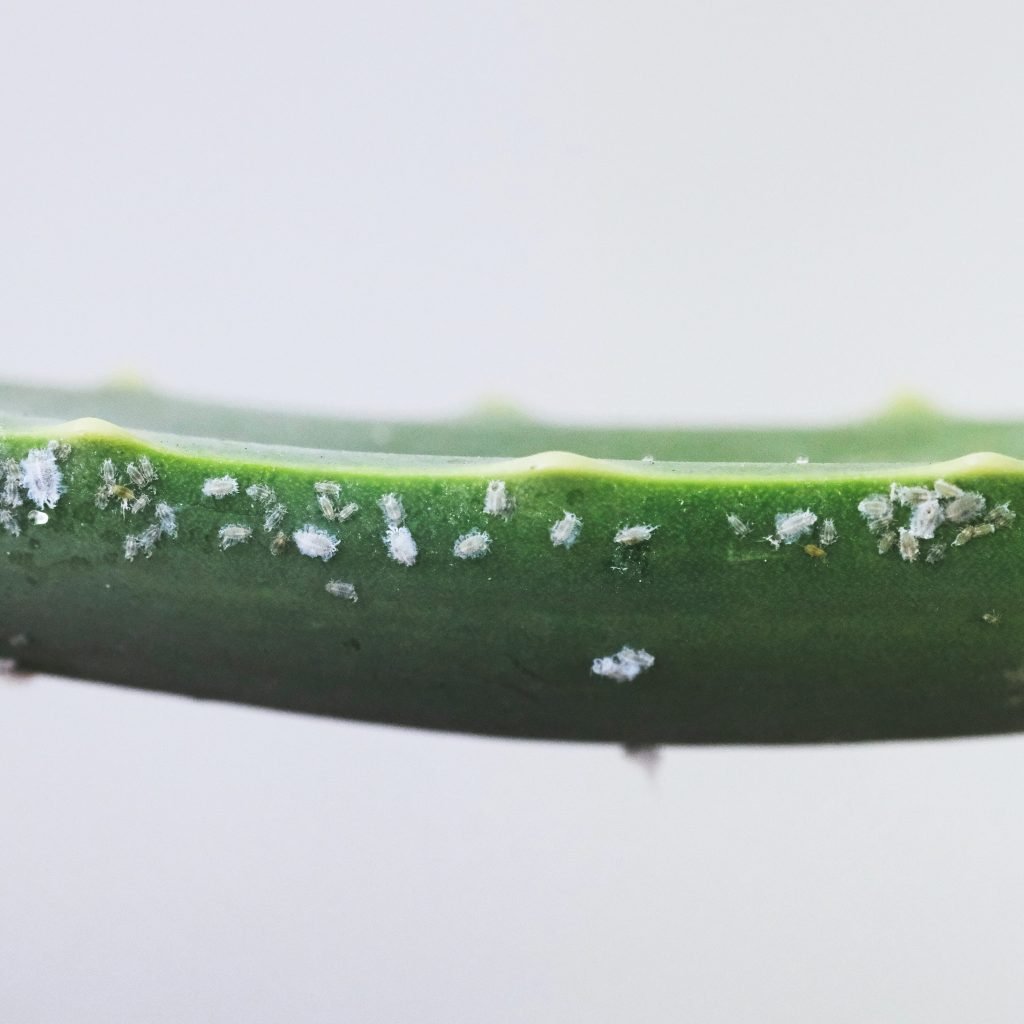
Detection
Mealybugs are white oval sap-sucking insects that secrete a white powdery substance. The latter looks like sticky cotton on the stem of the infected plant. Like many insects, they gather and feed on the juices of the growth. Eventually, the plant turns yellow and drops dead.
How to treat mealybugs?
- Wash the plant with water to dislodge the bugs and break their reproduction cycle.
- Soak a cotton ball with 70% isopropyl alcohol and rub the infected parts to kill and remove the insects.
- Spray with insecticidal soap. Start with the concentration of one teaspoon per gallon of water. Always make a test application to prevent any burn damage.
- Spray neem oil solution. (mentioned above)
- Introduce predator insects such as lacewing bugs and beetles.

